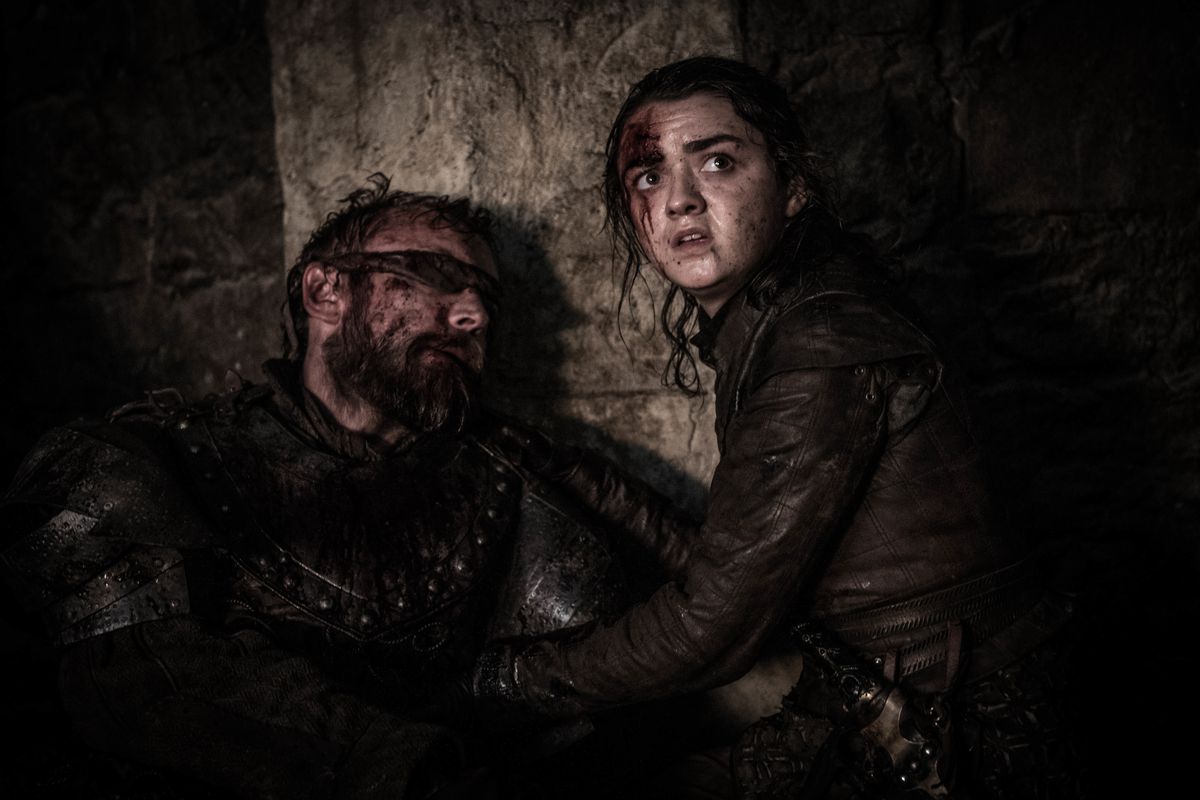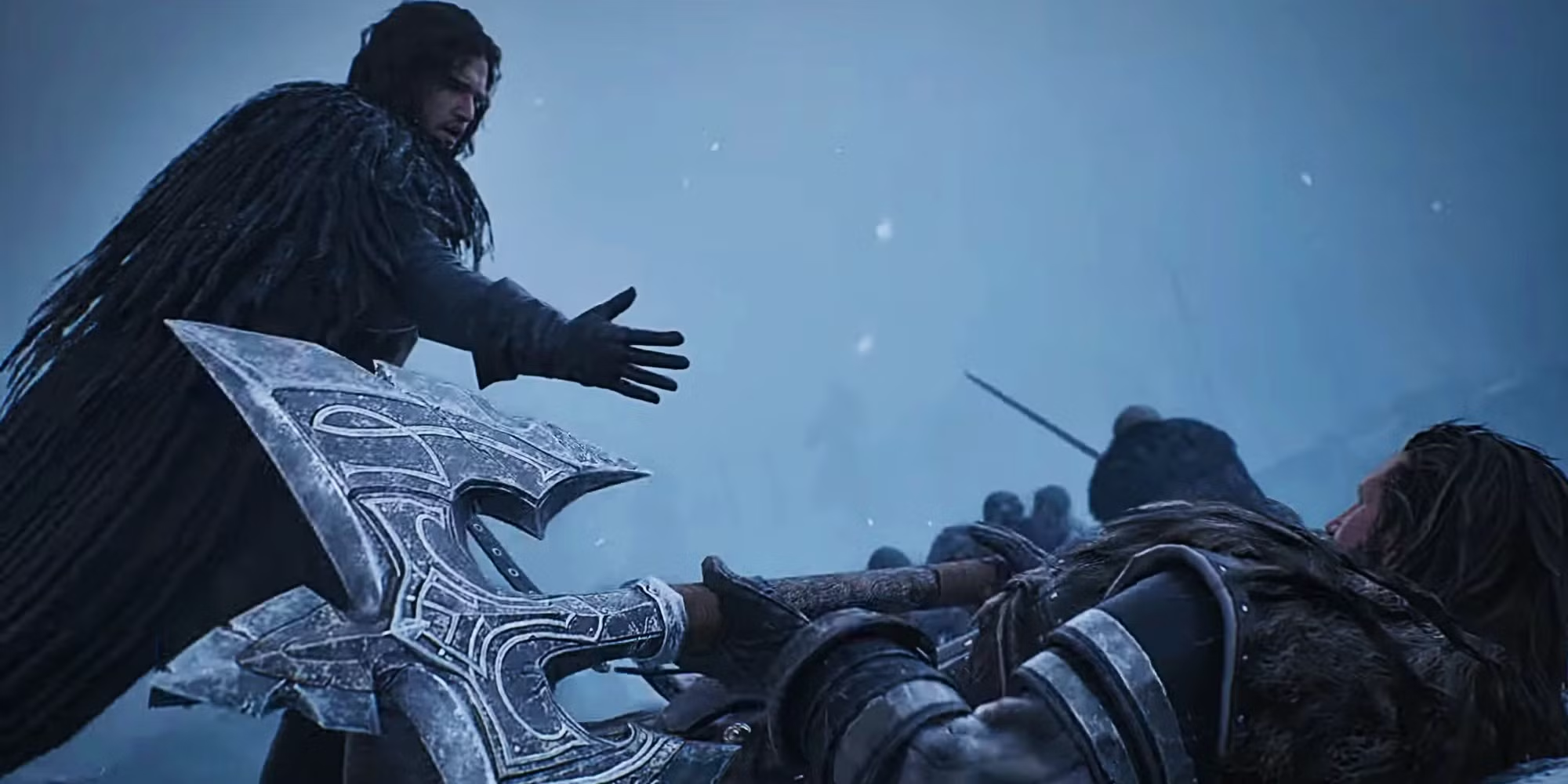This post contains spoilers regarding the third episode of Game of Thrones’ eighth season.
Game of Thrones’ much-anticipated Battle of Winterfell is over — and all I can say is “whoa.”
Actually, that’s not true. “The Long Night” was a great episode, but I’m not the only one pointing out that the military strategy and tactics on offer — especially by the Army of the Living — were pretty awful. The opening Dothraki charge was ill-advised at best. There seemed to be few defenses on the walls of Winterfell. And why didn’t Jon or Dany use their dragons to burn more giants and White Walkers?
Meanwhile, the Army of the Dead used their overwhelming numerical advantage to bust through the Living’s ranks and ransack Winterfell. It left me and others wondering: Couldn’t the Living have set up their defenses so much better?
To find out, I called two military experts: Ryan Grauer, an associate professor of international affairs at the University of Pittsburgh, and Mick Cook, an Australian combat veteran who fought in Afghanistan. Together, they agreed that Jon and Dany’s military tactics were wanting — and in some cases downright horrible.
Granted, it’s hard to come up with a strategy against overwhelming numbers of animated corpses, but even so, that one sucked.
— Bear Braumoeller (@Prof_BearB) April 29, 2019
Winning the Battle of Winterfell then, was a very lucky outcome (thanks, Arya!) considering how poorly Jon and Dany planned their defense.
Our conversation, edited lightly for length and clarity, follows.
Alex Ward
How well prepared was the Army of the Living heading into the Battle of Winterfell?
Ryan Grauer
The Living, at a superficial level, did about as good as could be expected with commanders who haven’t spent a lot of time leading large forces in the field. It was surprising to me that there was very little effort made to figure out what was going on with the Army of the Dead.
We saw, over the last couple of episodes, lots of efforts to fortify Winterfell and a couple feints toward discussion of tactics. But, especially given that they know a massive army is coming, they seemed remarkably unprepared for just how massive it was, and when they would be there.
Mick Cook
The way you prepare for a siege is you don’t march your forces out into the middle of the open to fight a numerically superior enemy. You let the enemy invest in trying to beat your defenses, and the defenses were all back to front from my point of view. Having the cavalry out in the front, then their infantry, then their defenses behind their whole force, it seemed like they decided to plan backwards, and it didn’t really pay off for them.
Alex Ward
Can you explain that a bit further?
Mick Cook
Sure, I’ll start with the catapults. The catapults serve to drop explosives right in front of your own forces as they attack the enemy. You try and put them only one-third of the distance behind your lead forces so that they can keep engaging the enemy while your forces are closing in on the enemy. But, to do that, the catapults still need to be protected, so they need to be behind your front lines.
You need your infantry or your cavalry at least in front of your fire assets. Also, with your close air support, like your dragon, you want to use that at the point that’s going to be most valuable to your ground forces, so that your ground forces can take advantage of any destruction that the dragons, in this case, would cause.
With light cavalry, like the Dothraki, their job is to go in real quick, cause damage, and come back — to exhaust the enemy. That’s probably not going to work with the Army of the Dead. Usually, light cavalry will sit out on the wings so they can move quickly without being inhibited by things like the infantry that will advance more slowly, that will get into a thick melee, and generally be a slow, harder slog of a battle.
Ryan Grauer
I’d have had the trench pushed further out, then I’d have had all of the infantry behind the trench, and then you have the catapults behind the infantry, so that as the dead come, they meet that barrier at the beginning. We saw in the episode that it took them a while to figure out what to do about that, until the Night King saw the problem and directed his forces how to overcome it.
But in that time while they’re held up, you can employ your dragons and start laying waste to the Army of the Dead without worrying about your forces being mixed in with them. And then, when they start to break over that trench barrier, they run into your infantry, and your infantry is fresh because they’re just standing there waiting for the Dead to get over that obstacle.
All the while the Living should be using the catapult behind the infantry to lob flaming stones and whatnot into the ranks of the Dead as the Dothraki cavalry swoop in from the sides and pick away at the edges.

Alex Ward
So if that’s what the plan should’ve been, what was up with that Dothraki charge at the beginning? Tell me that I’m wrong, please, that there was no real military justification for it.
Mick Cook
I would love to tell you, because I love a good argument. The way they filmed it was cool, but if the Dothraki were heavy cavalry in armored war horses like knights, and they had that hard-hitting shock power, then it’d make some sense.
But the Dothraki are a lighter, mobile cavalry, so charging them toward the middle of the Night King’s troops is not how you should use them. You’d use them on the wings.
So, I’ve got to agree with you: There’s not really a tactical reason for why you would use light cavalry to charge straight into a numerically superior force of infantry that really can absorb the momentum of the charge.
Ryan Grauer
The Dothraki had success charging into adversaries like that in the past because they were charging into living humans who are subject to terror and fear, leading to easier deaths. That wasn’t the case here.
And it’s also a little odd to start out with a Dothraki charge given the commanders’ previous experiences. In the Battle Beyond the Wall, Jon and his raiders were saved by Daenerys on her dragon, and in the Battle of the Bastards, they had the Knights of the Vale coming in to save the day at the last moment.
Employing cavalry for the culminating point of battle where they could have the most effect rather than throwing them away at the outset would’ve been a way better play.
Alex Ward
Did the Army of the Living use their two dragons wisely? There are some who say they should’ve been used a lot more to burn wights.
Ryan Grauer
I’m persuaded by the argument that dragons function largely as close air support. If we think about how they performed on the battlefield in that role, they didn’t make or break this battle.
And so, especially when you’re fighting an adversary that has effectively unlimited bodies to throw at you, it’s not clear that burning up some reanimated fighters just so others can take their place is a good use of that particular resource, especially if you believe that dragonfire could destroy the White Walkers, and perhaps the Night King himself.
Alex Ward
One thing I’m still pondering: Was it smart for Jon and Dany to send two dragons after the Night King? Or should one have stayed behind to burn the Army of the Dead while the other chased the undead dragon?
Ryan Grauer
I think it makes sense to send two dragons after the Night King. They have a special quality that could achieve the ultimate end: killing the Night King — or at least that was the expectation. I think you go ahead and use both of them to double your chances, especially when you know that the Night King is riding a reanimated dragon of his own.
Mick Cook
It’s not odd that they decided to have both of the dragons go after the Night King, because what else is the dragon going to do, burn some more dead people? I think the two dragons at the same time was a good choice.
Alex Ward
Okay, so the two versus one was a good choice. How about putting non-fighters in the crypt? That seems like an all-time blunder? There were dead people in there ready to be reanimated!
Ryan Grauer
It makes no sense at all. I think it’s evidence of, again, the failure of the Living to figure out as much as they possibly could about their enemy.
They know after the Battle at Hardhome that the Night King can reanimate the dead. But it’s not clear whether he can just raise his arms and raise any dead anywhere that he wants. Maybe there’s some sort of geographical limitation to his power, and depending on how far below the ground the crypts are, maybe it doesn’t reach that far.
That said, you’ve got a massive army marching down on Winterfell and you’ve got a whole bunch of women and children, what are you going to do with them? You don’t want them out in the open, or in spaces where they would get in the way of the fighting. The crypts are really the only place that you can stash them. And so, you risk what you have to.
Mick Cook
It was probably the best of a bunch of bad options, but we’ve come to expect better from Tyrion, at least, in terms of reasoning. I thought he would’ve at least figured it out.
Alex Ward
Another head-scratcher: Why put Theon and the Ironborn on the Bran, especially if Bran is the Living’s most valuable asset?
Ryan Grauer
Well, where would you draw other support from? If the Army of the Dead breaks into Winterfell, it really doesn’t matter whether you have a handful of Ironborn or no one there to protect Bran, unless of course you have Arya hiding in the woods somewhere ready to come and stab the Night King.
Mick Cook
I agree. I think when they were laying out the battle plan, they didn’t expect that the Night King was actually going to wait for the walls to be breached and then walk on through the front door. They expected him to use his dragon and go straight for Bran.
The other point is that the Ironborn set up a defensive perimeter, but it wasn’t much of a perimeter at all. They’re very skilled with their close-combat weapons like axes, yet they choose bows and arrows in the woods where they can’t see at range. The weapon they chose was designed to fail, almost.
Alex Ward
I thought a lot was basically designed to fail. If you expected the White Walkers to at one point get to your walls, wouldn’t you have better defense on those walls?
Mick Cook
Yeah, wall defenses were a big issue for me, as well. I mean, they didn’t even use burning pitch or anything like that, which works on the living as well as the dead. Also, they’ve got all this dragonglass, and they didn’t coat the top of the walls with it. That would stop them crawling over for a bit. It was as if the Living’s attitude was: “They’re going to make it over anyway, may as well just fight them hand-to-hand on top of the walls.”
I suppose, also, it made for good TV.
Ryan Grauer
I think the tension between good military tactics and good television came into conflict here. Like the two of you, I was surprised not to see pitch, or some other mechanism employed to help defend the walls a little bit more than what they tried.
But again, they were a much more outnumbered force than they thought they were, and for whatever reason they were surprised at how quickly the Dead got to Winterfell. If they’d had another few days, another week, maybe they’d have done a little bit better.
Alex Ward
It’s not just that the Living were outnumbered, right? It’s that the Night King had absolute control over them.
Ryan Grauer
We saw that at play in this battle, where you have the Night King who leads a very centralized organization controlling everything. He’s able to be responsive and force his own troops to lay down on the trench fire to make a bridge, for example.
On the Living side, you don’t have anything like that centralization, and you effectively remove the commander from battle with the blizzard. Jon and Dany were flying around looking for the Night King and literally couldn’t see anyone or anything.
Even if Jon could communicate orders about how to adjust to emergent battlefield challenges, he doesn’t know what they are. And so the Night King was better able to cut through the fog and friction of war with his organizational structure, but that resulted in a weakness that Arya exploited and ultimately won the day for the living.
Mick Cook
The weather effects played a massive role in all of this that would’ve been very had to plan for. The close-air support that dragons provide is not an all-weather option. The same thing that affected those dragons affects jets in the real world. That’s what land-based artillery like those catapults are good for: Even if you can’t see, just lob hot rocks all day long and still cause damage.
Alex Ward
I’d say the White Walker generals could make important calls despite the weather but, they seemed ultimately useless, especially since the Night King had so much control. Their only use was coming into Winterfell looking like that opening credits scene in Reservoir Dogs.
Mick Cook
You thought Reservoir Dogs, I thought Backstreet Boys when they came around the corner. Or maybe it’s NSYNC: They were just there to make Justin Timberlake look good.
Alex Ward
What better way to end than with that?




















![[Book Review] The Blade Itself (The First Law Trilogy) by Joe Abercrombie](https://bendthekneegot.com/wp-content/uploads/2018/01/1516047103_maxresdefault-218x150.jpg)
















